The information above was supervised by Stacey Zimmels on 31/03/2023. Stacey is a feeding and swallowing specialist speech therapist (SLT) and International Board-Certified Lactation Consultant (IBCLC).
A breast milk bath is a natural remedy for skin dryness, irritation, and baby acne. Here’s all you need to know about giving your little one a breast milk bath.
World Breastfeeding Week is all about celebrating the wonderful act of breastfeeding. The nutritional benefits of breast milk are well known, but it also has a multitude of other positive properties. Mothers and people who lactate are now experimenting with unique ways of using their breast milk, including teething lollies and breast milk baths.
Whilst bathing in milk has long been part of a luxurious skincare routine (hey, Cleopatra!), breast milk baths might sound like a fairly new phenomenon — although, as a natural cleanser and disinfectant, it’s likely this has been happening throughout history. However, with Google searches for ‘breast milk baths’ reaching a ten-year peak, and mommy bloggers all over the world advocating its benefits, it’s clear that breast milk baths are now hitting the mainstream.
Why are breast milk baths good for a baby’s skin?
Why are so many mothers now considering breast milk baths for newborn babies? Well, your breast milk is made up of various components, with so many healing properties that you could easily be reading out the ingredients list of an expensive skincare range.
This makes breast milk baths not only an amazing way to utilize surplus milk, but may also be beneficial for your baby’s skin.
Breast milk is made up of many different properties that can keep your baby’s skin soft, clear, and moisturized. These properties include:
Palmitic acid: The most common saturated fatty acid found in humans and animals, this is a brilliant natural moisturizer, which makes it great for keeping your baby’s skin super soft.
Oleic acid: An unsaturated fatty acid thathelps the skin absorb moisture, making it great for healing dry skin. It can also fight the signs of ageing — not that this will be a concern for your little one!
Linoleic acid: A polyunsaturated fatty acid that maintains skin hydration, and fights irritation and inflammation.
Who knew that breast milk was the ultimate baby skincare secret? From skin dryness to baby acne, a breast milk bath can help with a number of infant skincare concerns.
The many benefits of breast milk baths for newborns
We all have times when our skin could do with a little TLC — and it’s no different for your baby. Giving your little one a breast milk bath is a great way of nourishing and soothing their skin from head to toe and back again.
Here are the primary milk bath benefits for your baby:
Breast milk is a great moisturizer. The fatty acids in breast milk help to keep your baby’s skin soft and supple, while also making it an effective treatment option for dry skin conditions such as eczema and cradle cap.
Milk baths may clear up baby acne. A baby can actually have spotty breakouts due to the parent’s hormones still being in its body from pregnancy. Luckily, breast milk may help with baby acne as it contains lauric acid, which has antibacterial properties and can also be found in that beauty blogger favorite, coconut oil.
Breast milk contains anti-inflammatory properties. If your baby’s skin is red or inflamed due to an allergic reaction, an infection, an insect bite, a burn, or a cut, your breast milk may help to reduce inflammation and ease your little one’s discomfort.
Breast milk baths can clear up diaper rash. Breast milk baths not only soothe the initial irritation caused by diaper rash but bathing your baby regularly in a milk bath may help to clear the rash quickly and naturally.
Breast milk can be a natural substitute for some skincare products. It’s packed full of substances that hydrate and protect, which is perfect for delicate baby skin.
Will a breast milk bath improve your baby’s skin?
While the science illustrates breast milk’s various healing properties, it’s the stories from parents that illustrate just how effective it can be. Moms on both sides of the Atlantic have shared their experience of breast milk baths, with many claiming it to be a natural remedy, solving issues including eczema and cradle cap.
Bathing with breast milk every day isn’t necessary. A weekly or fortnightly breast milk bath may be enough to see an improvement in your little one’s skin. Of course, do keep a close eye on any areas of irritation as they may require additional treatment.
How much breast milk should you use for a milk bath?
The best way to prepare a breast milk bath is to dilute your milk directly into the bath water. When figuring out how much of your milk to put in the bath, a general rule of thumb is just enough to make the water cloudy. Using between 5 and 10 oz is usually a good amount and enough to soak into your baby’s skin.
Should you use fresh or stored milk for a milk bath?
You can use freshly expressed, refrigerated, or frozen breast milk — but be sure it’s thoroughly defrosted first. As the baby isn’t drinking the milk, you can get away with using breast milk that is out-of-date, as long as it doesn’t smell off.
Depending on how you store your breast milk, either option works well for breast milk baths. Refrigerated milk should be used within six days, while frozen milk typically lasts for around six months. If you’re using freshly-pumped breast milk, you can leave it at room temperature for around 4 to 6 hours.
How often should you give your baby a milk bath?
How often you should bathe your baby in breast milk really depends on how often you normally bathe them, but also whether or not they have any skin issues you’re trying to treat. If you want to give your baby breast milk baths, once or twice a week should be enough for them to benefit from the healing properties of your milk.
How to do a breast milk bath
Bathing your baby in breast milk is just as easy as giving them an everyday bath. First, you’ll need to ensure you have a supply of expressed breast milk, whether yours is freshly pumped using a breast pump such as Elvie Curve or Elvie Pump, or you use refrigerated or frozen (but defrosted) breast milk, aim for around 5 to 10 oz per bath.
To give your baby a breast milk bath:
Fill the tub with warm water and then add your breast milk. You should add just enough to make the water a little cloudy. If you have more milk left over from expressing you can, of course, add a little more but be careful, your baby might smell a little milky if you use too much — so keep an eye (or nose) on that.
Once your baby is in the bath, let them soak for about 10-15 minutes, as tolerated, dependent on age. This way, their skin can absorb all the nutrients from your milk. You could even add some bath toys to keep them occupied while they’re soaking.
Bathe your baby as you usually would, using your hands or a small cup to dribble water over them. If they have any rashes, scabs or other skin conditions that need attention, spend a little extra time making sure plenty of bath water reaches them.
Once you’ve finished bathing, there’s no need to rinse your baby off; just pat them dry with a towel and use a baby-safe lotion to lock the moisture and nutrients in if you prefer.
If your baby suffers from a skin condition such as eczema, some mothers have found adding extra ingredients, such as oat milk, to the breast milk bath can help ease inflammation and irritation associated with certain skin complaints in little ones.
The benefits of breast milk are pretty much endless. From strengthening the immune system to providing relief from skin conditions — is there anything your magical liquid can’t do? Giving your baby a breast milk bath once or twice a week could not only moisturize their delicate skin but help them recover from cuts and grazes and even help to soothe diaper rash.
References
World Breastfeeding Week. [Internet]. [cited 2024 Jan 18]. Available from: https://worldbreastfeedingweek.org/
Happy Family Organics. Breast Milk Benefits [Internet]. [cited 2024 Jan 18]. Available from: https://www.happyfamilyorganics.com/learning-center/mama/breast-milk-benefits/
Metro.co.uk. Mum keeps kids cool and soothes teething pain with breast milk ice lolly hack [Internet]. 2019 Jul 28 [cited 2024 Jan 18]. Available from: https://metro.co.uk/2019/07/28/mum-keeps-kids-cool-soothes-teething-pain-breast-milk-ice-lolly-hack-10475215/
Metro.co.uk. Mummy blogger gives her three-year-old daughter breast milk baths to soothe eczema [Internet]. 2019 Jul 12 [cited 2024 Jan 18]. Available from: https://metro.co.uk/2019/07/12/mummy-blogger-gives-her-three-year-old-daughter-breast-milk-baths-to-soothe-eczema-10215400/
Cleveland Clinic. Eczema [Internet]. [cited 2024 Jan 18]. Available from: https://my.clevelandclinic.org/health/diseases/9998-eczema
Cleveland Clinic. Cradle Cap (Seborrheic Dermatitis) in Infants [Internet]. [cited 2024 Jan 18]. Available from: https://my.clevelandclinic.org/health/diseases/15786-cradle-cap-seborrheic-dermatitis-in-infants
Muliawati Y, Yulia R, Nisa K. The Effect of Giving Virgin Coconut Oil (VCO) to Changes in Lauric Acid Levels in Breast Milk. ResearchGate [Internet]. [cited 2024 Jan 18]. Available from: https://www.researchgate.net/publication/353129136_The_Effect_of_Giving_Virgin_Coconut_Oil_VCO_to_Changes_in_Lauric_Acid_Levels_in_Breast_Milk
Sankararaman S, Sferra TJ. Diaper Dermatitis: A Review and Brief Survey of Eruptions of the Diaper Area. Am J Clin Dermatol [Internet]. 2019 [cited 2024 Jan 18];20(3):393-414. Available from: https://www.ncbi.nlm.nih.gov/pmc/articles/PMC6567207/
Cleveland Clinic. Diaper Rash (Diaper Dermatitis) [Internet]. [cited 2024 Jan 18]. Available from: https://my.clevelandclinic.org/health/diseases/11037-diaper-rash-diaper-dermatitis
Healthline. What Is a Milk Bath for Baby? [Internet]. [cited 2024 Jan 18]. Available from: https://www.healthline.com/health/baby/milk-bath-baby#What-is-a-milk-bath-for-baby?-
All Natural Mothering. Breast Milk Bath [Internet]. [cited 2024 Jan 18]. Available from: https://www.allnaturalmothering.com/baby/breast-milk-bath/


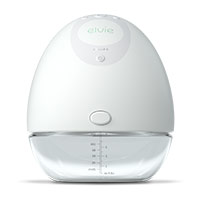
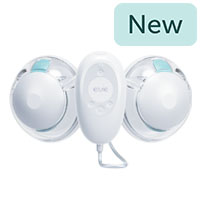
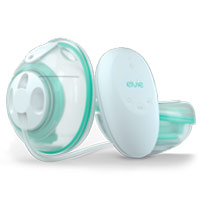
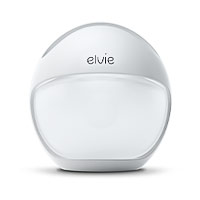
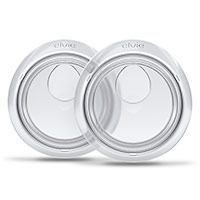
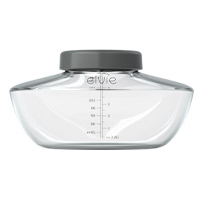
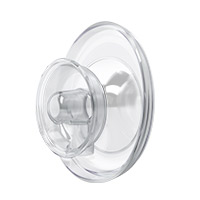

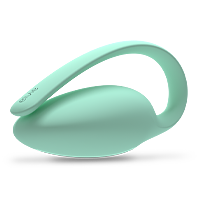
 9 minute read
9 minute read